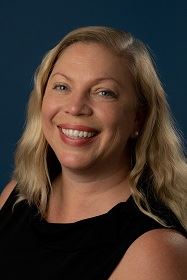USA Dive Club members and their guests are invited to attend either an in person meeting or a virtual meeting using Zoom.
The IN PERSON MEETING will be held at our new location:
Hampton Inn
720 E Cypress Creek Rd
Fort Lauderdale, FL 33334
Last month we were alerted that Twin Peaks on Andrews is open and a couple of our members went for dinner and drinks before the meeting. If anybody is interested, this is the place to meet before the meeting.
Out of caution,we ask participants of the live meeting to be vaccinated and to wear a mask out of consideration of our other members.
To Attend the ZOOM MEETING:
You must register in advance for this meeting. Click on the link below to register. Members bringing a guest should send the guest's name and email address to president@usadiveclub.org so the guest's registration will be approved. Members and guests must register using this link.
https://us02web.zoom.us/meeting/register/tZApdOqoqD0sGdFacC4FkCEP6XRpmvC8vku-
After registering, you will receive a confirmation email containing the link to click when it is time to join the meeting. You must register before 5:00 PM on the day of the meeting.
Please join the meeting a little early to allow time to admit people from the waiting room before the meeting starts.
We will start the meeting with 10 minutes of social time so we can catch up with our friends. Then we will turn the meeting over to our speaker.
Program:
Shelly Krueger is the Florida Sea Grant agent for the University of Florida IFAS Extension, Monroe County. Shelly has a bachelor’s degree from Georgia Tech and a master’s degree from Savannah State University in marine science.
Shelly will talk about sargassum and a pilot sargassum composting experiment that Shelly has been working on with Michelle Leonard-Mularz at the Key West

Botanical Garden.
This summer, you may have noticed tons of brown organic material washed up on beaches and decaying all over beaches on the Atlantic Ocean. But what is it, really? And why is it appearing on our beaches? It’s called sargassum, and it is brown algae, or seaweed, that floats in massive mats out on the open ocean. The area sargassum comes from is called the Sargasso Sea, which is not a true sea at all, but an area far offshore in the Atlantic Ocean between the eastern coast of Florida and Bermuda.
The Sargasso Sea and the mats of sargassum that float within it are defined by the dominant ocean currents – the Gulf Stream on the west, North Atlantic Current to the north, Canary Current on the east, and the North Atlantic Equatorial Current to the south, which creates a swirling gyre that contains the sargassum floating out at sea. Frequently, the sargassum gets
caught up in one of the currents and escapes the Sargasso Sea.
If you like to fish, you may have heard these floating algae mats called the “weed line,” and they are fantastic spots to sportfish. Sargassum is actually a very important habitat type out in the open ocean as it provides one of the only places for some species of fish, crabs, and juvenile loggerhead sea turtles to forage and hide from predators. A thick clump of sargassum provides a feast for many species, including birds, and also attracts the larger gamefish who prey upon these species, like mahi and tuna. NOAA Fisheries considers sargassum essential fish habitat for snapper, grouper, gray triggerfish and coastal pelagic migratory species like mackerel.
In the Florida Keys, when we experience prevailing winds from the south and southeast, these massive floating mats of sargassum that have broken free from the circling gyre of the Sargasso Sea are washed onto shore with the wind and waves. Tons and tons! Unfortunately, the dead and decaying sargassum can remove oxygen from the water and lead to fish kills,
smother seagrasses and turtle nests, and can become packed so thick inside the residential canals it can become difficult to get your boat out.
Historically, washed-up sargassum is one of the ways beaches were created in the Florida Keys, as the accumulation of seaweed along the shoreline helps to keep the sand from eroding and provides nutrients to help enrich the soil. But when the sargassum encounters a seawall or a canal instead of the beach there is little benefit for it decays, sinks, and stinks! Unfortunately, this is a major cause for fish kills because the decomposition of organic matter literally removes the oxygen from the water column.